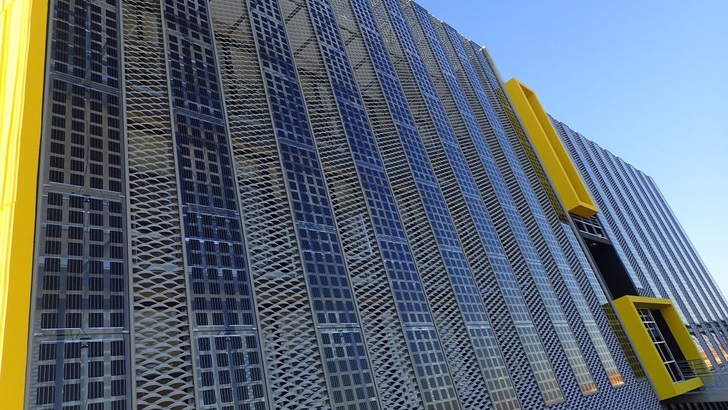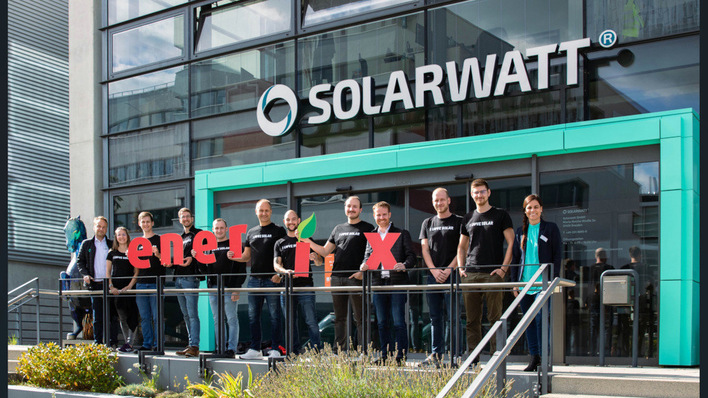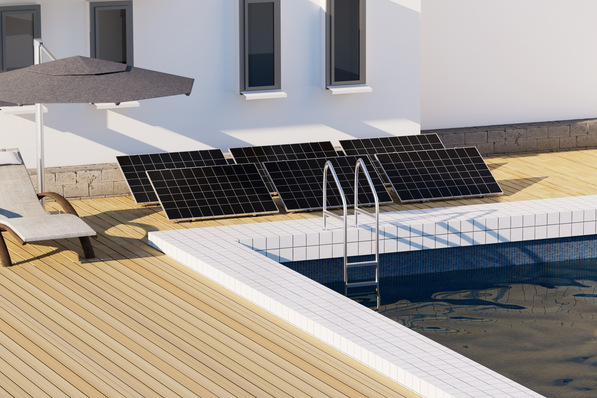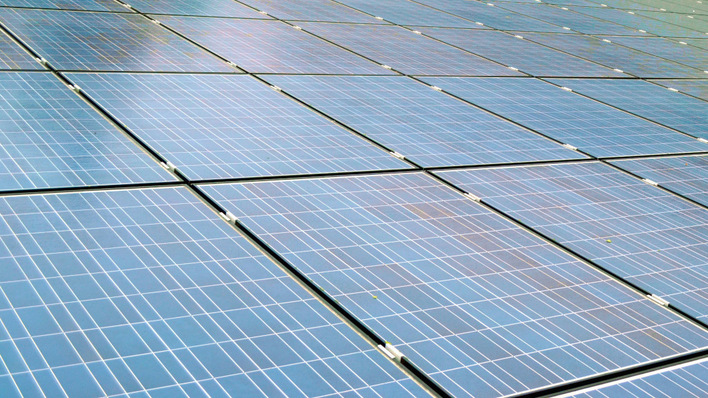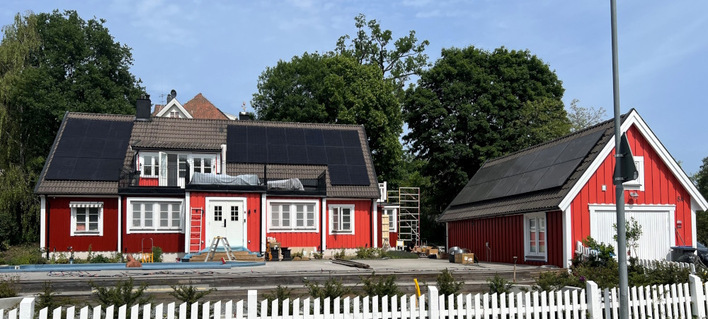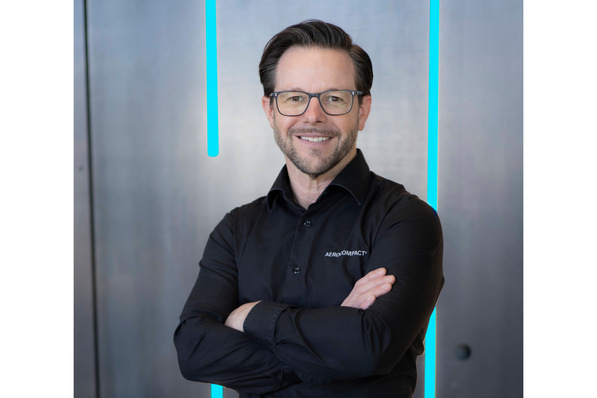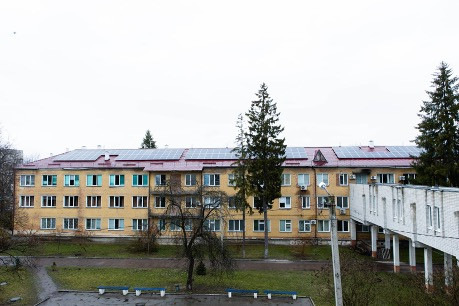What experience do you at the Sonnenstromfabrik in Wismar in building-integrated photovoltaics (BIPV)?
Bernhard Weilharter: We originally got into BIPV with Solrif, the in-roof system from Ernst Schweizer. This mounts the solar panels as part of the roof cladding. We generally use double-glass panels in conjunction with Solrif, and those in a variety of formats: 60-cell, 54-cell or 48-cell. However, the Solrif system is not so common in Germany, it is more prevalent in France or Italy. The system is very successful in Switzerland and France.
Which market is winning the BIPV race?
The Solrif system gets installed very often in Switzerland. Ernst Schweizer established their own sales channels there – using our double-glass panels. In the future, we will actively cooperate with three key wholesalers in Switzerland.
Is the market for in-roof systems slowly ascending? Or would you rather say it tends to go sideways?
For the Solrif system, we provide both full black and transparent double-glass panels, and we also have some freedom when it comes to the cell matrix. That gives us more options, such as for conservatories or carports. For example, in Sweden we found a sales partner that distributes such in-roof systems. You could say that the market is turning around: Feed-in tariffs guaranteed by the state are losing in significance. BIPV works best in countries with liberal markets, i.e. where customers are free to make choices according to their aesthetic needs.
Do you exclusively use the Solrif system for in-roof solutions?
We also use an in-roof system by Impegs. They are a smaller German manufacturer. That system is very well-suited for frameless laminates. It can be used for cold roofs, conservatories or solar carports. It is rainproof and looks great. We are planning to use them for our first charging stations in Sweden. They currently have trapezoidal metal roofs, but will soon be equipped with roofs from Impegs that include our double-glass panels.
Why double-glass rather than the more inexpensive glass-film laminates?
Again, it is all about aesthetics. The thing simply has to look great. We can play around with the cell matrix, i.e. adjust the semi-transparency of the panels. That would not be possible with glass-film. For example, we would be able to put a 48-cell matrix into a panel large enough for 60 cells. Also, double-glass allows us to work with frameless laminates, which creates an even more elegant look.
What other opportunities are there for you as a panel manufacturer?
If we start moving away from pitched or gabled roofs, that makes façades more interesting. Together with Miramas in France, we were able to reach an important milestone for us. We are currently planning further projects in the Netherland and Scandinavia. In Germany, the regulatory climate is too complex. The company Galaxy out of Stuttgart as become a partner to assists us in planning and gathering the necessary competences for such solar façades.
What is your greatest challenge when planning such projects?
Germany has no standardised policies. Generally the authorities require filing for a general technical approval. Otherwise, you would have to individually certify each façade for wind pressure and suction loads.
Façades are also often made from glass panes. Is it possible to adapt the applicable standards to these?
Our solar panels consist of two sheets of annealed glass with the laminate between them. That corresponds to the laminated safety glass that can be covered by the building approval which is given out by the German Institute for Structural Engineering (DIBt). But this process is elaborate, extremely expensive and, worst of all, very inflexible. If you change the dimensions of a panel – even by a single centimetre – the certification is no longer valid. The same if you change the type of solar cell to get more power out of the panel. Change any minute detail of the solar panel, and the certification is void.
So you end up having to apply for an individual certificate…
Exactly. There are other aspects, too. One particular challenge is fire safety: The back of every solar façade needs to be ventilated. And fire regulations state that it needs to be impossible for flames to spread behind the panels. But natural convection would allow a fire to spread very rapidly. This makes designing a solar façade a very complex undertaking. And so we are planning to increasingly cooperate with partners such as Galaxy in Stuttgart.
What other partners do you have?
We are in a partnership with the well-known glass manufacturer AGC Interpane that have their own BIPV department. Their specialists can realise all kinds of crazy projects, with oversized panels and glass thicknesses of eight millimetres, where one panel can weigh in the hundreds of kilograms. Here at CS Wismar we cannot process such orders, so we pass them on to AGC Interpane. In return, they give us all of the inquiries that can easily be realised using our products.
Where do you see opportunities for expansion in solar façades?
We are already able to adapt the panel dimensions to the requirements of architects. The thickness of laminates can also vary. We see an opportunity in the cost per square metre for certain materials for façades, which can be several times higher than what solar panels cost. So far, solar façades have been more of a niche solution that only requires small amounts of panels, and often in special sizes. Architects do not need run-of-the-mill panels – that is its own line segment.
What are you doing to make your products even more attractive?
We plan to soon offer coloured panels. In colours that are not only determined by the cells or the backsheet. The colour is applied to the front glass via a screen printing process and varies from dark grey via many colours all the way to white. Architects and building owners are quite happy to accept any losses in power output that these might cause.
How is the demand from architects developing?
Interest among architects is growing. But they are usually unwilling to compromise when it comes to design. That limits the circle of potential project partners and suppliers. And it also drives up prices.
In what way?
The sooner in the planning phase of a façade the PV is included in the any considerations, the more likely it is that they will come up with an economical solution. Ignorance is one of the major drivers of cost. Custom sizes or colouration are the greatest cost factors. However, with proper and timely planning, many solar façades could be build using available solar products and standard solutions. That, in turn, would generate more volume for us and allow us to bring manufacturing costs down. (HS)
Keep up with innovation in PV! Watch our PV Guided Tours at The Smarter E Europe in Munich:
https://www.pveurope.eu/Videos/pv-Guided-Tours-videos-2018
Stay informed, get our newsletter twice a week.
Register here
Read more about solar modules.
Read more about solar mounting systems.
Read more about solar energy storage.

